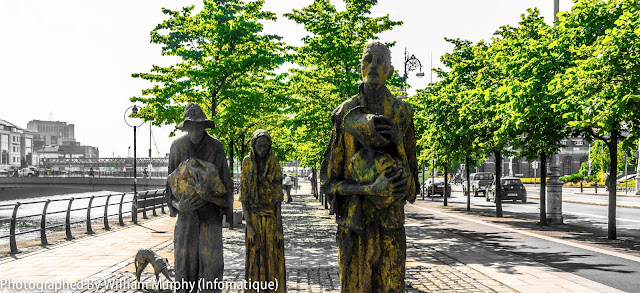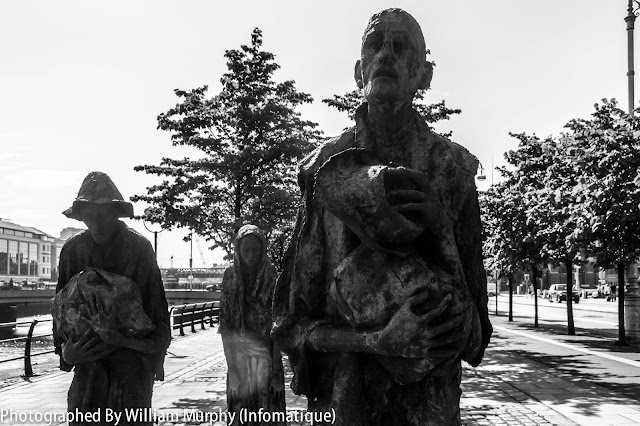Sunday, July 21, 2013
Famine (1997) on the Custom House Quay in Dublin
Public art is successful if it makes people stop, look and think and on that basis this work by Rowan Gillespie is a huge success.
Today when I visited there was a large number of young American tourists there and their guide was telling them about the "Irish Potato Famine". Americans refer to it as the "Irish Potato Famine" while we in Ireland to it as the "Famine" or the "Great famine"
Rowan Fergus Meredith Gillespie (born 1953) is an Irish bronze casting sculptor of international renown. Born in Dublin to Irish parents, Gillespie spent his formative years in Cyprus.
The Irish Famine and subsequent catastrophic migration has motivated two major works by Gillespie, and so it must be said that the portrayal of Famine, is a major theme of the artist's work. In several of his site specific pieces, such as Famine (1997) on the Custom House Quay in Dublin, his life-sized human figures are emaciated and haunting.
In June 2007, a series of statues by Gillespie was unveiled by President Mary McAleese on the quayside in Toronto's Ireland Park.
In Ireland, the Great Famine was a period of mass starvation, disease and emigration between 1845 and 1852.
During the Famine approximately 1 million people died and a million more emigrated from Ireland, causing the country's population to fall by between 20% and 25%. The cause of famine was a potato disease commonly known as potato blight. Although blight ravaged potato crops throughout Europe during the 1840s, the impact and human cost in Ireland — where one-third of the population was entirely dependent on the potato for food—was exacerbated by a host of political, social and economic factors which remain the subject of historical debate.
The famine was a watershed in the history of Ireland. Its effects permanently changed the island's demographic, political and cultural landscape. For both the native Irish and those in the resulting diaspora, the famine entered folk memoryand became a rallying point for various nationalist movements. Modern historians regard it as a dividing line in the Irish historical narrative, referring to the preceding period of Irish history as "pre-Famine".
Subscribe to:
Post Comments (Atom)


















No comments:
Post a Comment